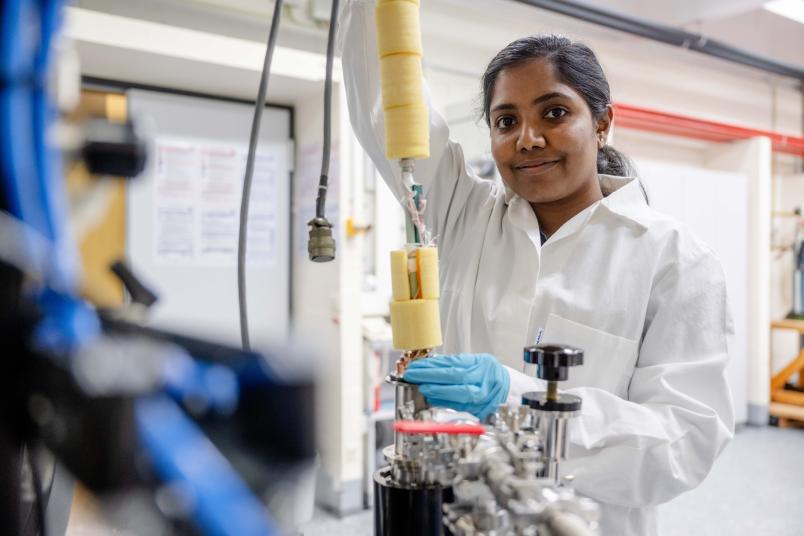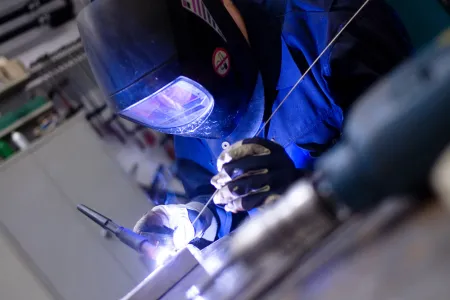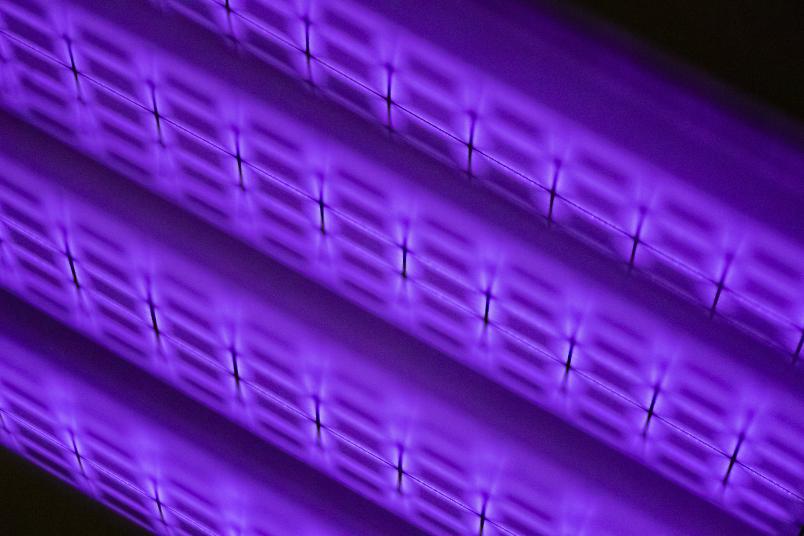
Materials Science
Teslin Thomas explores novel materials
PhD student Teslin Thomas is fascinated by solid-state physics, by how properties are created and by how they change in certain types of materials.
What do you find most fascinating about materials science?
One of the great things about materials science is that it’s very hands-on. In our lab, we grow tiny crystals, and it’s amazing to see how they sparkle and to touch their surfaces to feel their shapes. We carry out measurements to study the properties of these crystals.

It’s a bit like solving a puzzle.
It’s a bit like solving a puzzle, because we want to find out why some materials behave the way they do and why they have certain properties. It is exciting to study new materials, to gain a better understanding of how exotic properties emerge in some materials and how they can be explained. Hopefully, in the future, researchers will be able to use our findings to create new materials with specific properties.
What has been your most surprising research experience?
When I started my PhD in 2021, my supervisor, Professor Anna Böhmer, had only just begun building the lab. This gave me the opportunity to help set up the lab. The experience I gained building the measurement setup that I now use every day provided me with valuable insights.

I had the opportunity to learn from scratch.
I had the opportunity to learn from scratch. In addition to wiring the sample probe, I also instrumented the low temperature measurement setup. It was exhilarating and an unforgettable experience, when my setup finally worked perfectly.
Currently, we are using a method known as elastoresistance to study materials. Simply put, elastoresistance is a technique that examines how the electrical resistance of a material changes when it is subjected to strain or deformation. Strain tuning offers several advantages and is a powerful tool for understanding and manipulating the properties of materials.
What experiences have you made here as a young female physicist from India?
I came to Germany, to Mainz, for my Master’s degree in solid-state physics. At first I wasn’t sure about coming to Germany without my family and friends. I was afraid. But it was the right decision. The quality of the studies is high. Germany is a good place to study.

I am happy to be here at Ruhr University.
After my Master’s degree, I was looking for a PhD position, came across the one at Ruhr University and applied. At first I was unsure if I’m good enough to do a PhD in physics, but friends encouraged me to do it. Now, I am happy to be here at Ruhr University and I’m lucky to have a woman as a PhD supervisor, which is still rare. She’s very supportive. I hope that, one day, I can contribute to science and to society with my research.
What would be your advice to young international researchers who are interested in pursuing a PhD here?
My advice would be: don’t be afraid that it might be difficult. Don’t hesitate, go for it and work hard.

